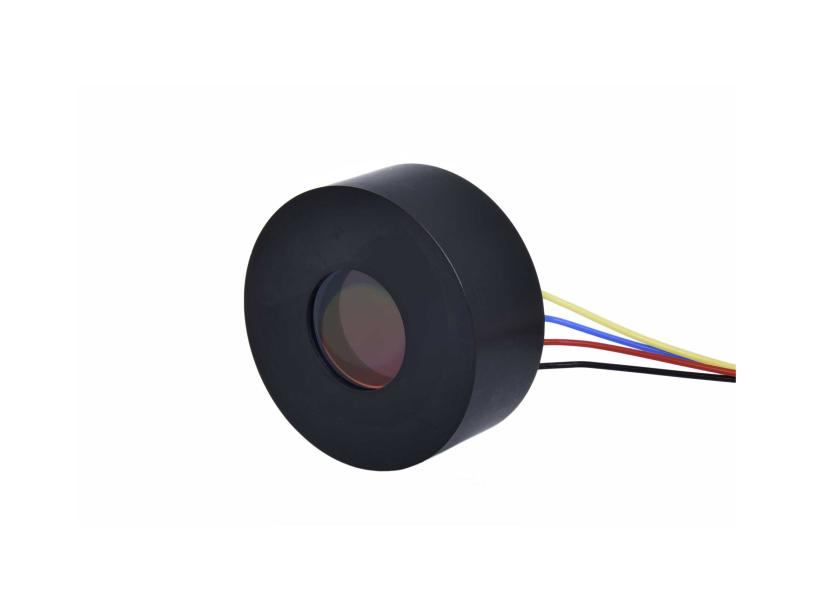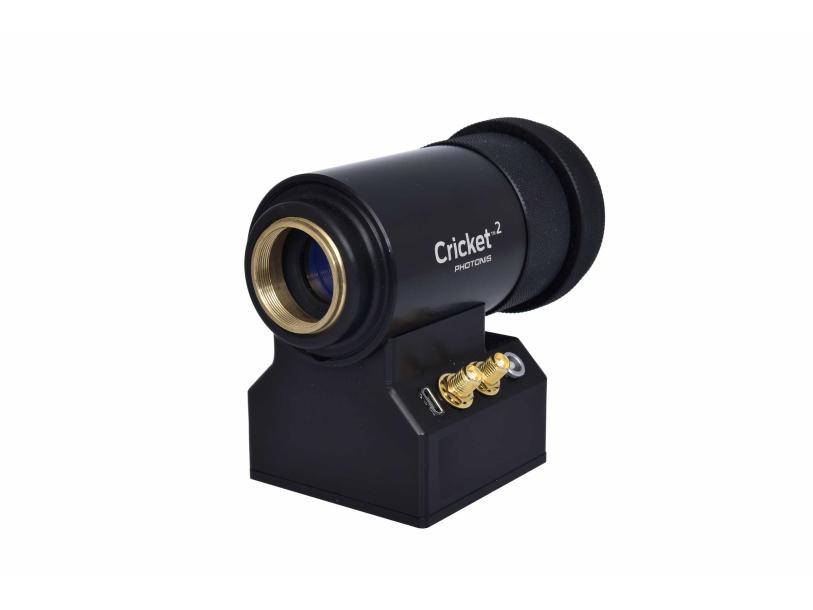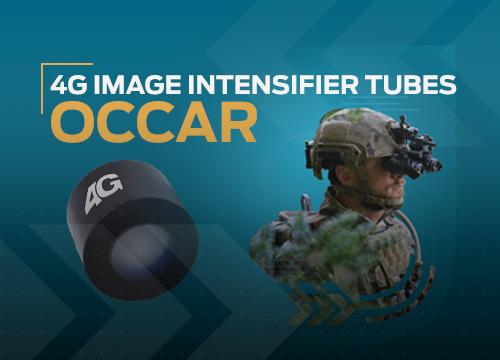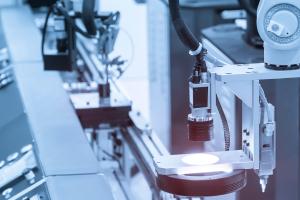Image Intensifiers are used to intensify low light level images down to the detection and imaging of single photons. Photonis, part of Exosens offers a wide range of Image Intensifier Tubes for scientific applications (IITs), matching PSUs and gating electronics for OEM customers looking to implement low light level intensification in their product. For researches who need to boost their camera sensitivity (CCD or CMOS) but dedicate time to science rather than instrument set-up, Photonis offers the Cricket2 IIT adapter device for plug & play IIT functionality. Discover Cricket™² equipped with industrial-leading Photonis Image Intensifier technology, and recognized for best value. Cricket™² sets an unmatched standard for connectivity with scientific microscopes and cameras.
Photonis multialkali Hi-QE photocathode technology combines a high quantum efficiency (QE) in the 120-1050 nm spectral range, with a dark count rate as low as 50 Hz/cm², thereby achieving a superb signal to noise ratio. When the photocathode is utilized as an ultra-fast electro-optical shutter, sub nanosecond (billionth of a second) gating speeds can be achieved for accurate transient phenomena imaging.
Photonis Image Intensifier Tubes for scientific applications are based on patented high end microchannel plate (MCP) technology offering a high dynamic range and an unmatched collection efficiency of >95%. Photonis Image Intensifier Tubes are the ideal choice for low light level intensification in applications such as: Ultra high speed imaging, Liquid and Gas flow imaging, Scientific Imaging (Plasma physics/LIBS/FLIM/Quantum Optics/LIF/PLIF/Photon Counting/Thomson Scattering/Raman spectroscopy), Time gated Imaging, Medical Imaging and for instance Corona discharge detection.
Learn More About Image Intensifiers for Advanced Scientific Applications
Need some answers? Ask our experts!
Contact us



Image Intensifiers for Advanced Scientific Applications
Image Intensifiers, also known as Image Intensifier Tubes (IITs), are sophisticated devices designed to amplify low-light-level scenes, or even to detect and visualize even single photons (special configuration). These tubes are essential components in various scientific instruments and systems, enabling researchers to explore phenomena that would otherwise be invisible to the human eye. They also play a vital role in night vision technology, enhancing the detection of objects in low-light environments. Click here to watch the film on YouTube.
The functionality of an Image Intensifier Tube relies on several key components, including a photocathode, microchannel plate (MCP), and phosphor screen. When photons from a low light scene enter the objective lens of the Image Intensifier tube, the photocathode, which is negatively biased, absorbs the photons and converts them into photoelectrons. This process is known as photoelectric conversion. These photoelectrons are then accelerated towards the MCP, where they undergo multiplication through a process called electron multiplication. The MCP consists of thousands of tiny channels, each serving as a pathway for the accelerated electrons. As the electrons pass through these channels, they collide with the channel walls, resulting in the emission of secondary electrons. This cascading effect leads to a significant amplification of the original signal, thereby enhancing the image.
At the output end of the MCP, the intensified electron image impinges upon a phosphor screen, where they are converted back into a visible image (photons). This light can then be captured by an imaging chip for further processing and analysis.
The fabrication of Image Intensifier Tubes involves intricate processes and specialized materials to ensure optimal performance. High-voltage conditions are employed to accelerate the electrons within the tube, while stringent quality control measures are implemented to maintain the integrity of the device. Advanced techniques such as vacuum tube-based technology are utilized to create a sealed environment conducive to electron multiplication while minimizing external interference.
Image Intensifier Tubes find widespread use in a multitude of scientific applications, thanks to their ability to improve the sensitivity and resolution of imaging systems in low light conditions. From ultra-high-speed imaging to medical diagnostics and spectroscopic analysis, these tubes play a crucial role in advancing our understanding of the natural world.
In summary, Image Intensifier Tubes represent the pinnacle of technological innovation, combining principles of photoelectric conversion, electron multiplication, and phosphor conversion to amplify low-light-level images for scientific exploration. They have revolutionized fields such as night vision technology, enabling increased detection capabilities in environments with minimal lighting. Additionally, their small size and high sensitivity make them ideal for applications where space and efficiency are paramount.
The input of low light energy into Image Intensifier Tubes triggers the intricate process of focusing and gating the photons through various stages of electron multiplication. This gain in signal strength is crucial for sensitive detection of faint sources such as single rays of light or radiation. By harnessing the power of electron multiplication, Image Intensifier Tubes offer unparalleled sensitivity and resolution in low-light imaging, making them indispensable tools for scientific research and exploration.
What's new in Image intensifiers for scientific applications?
See all
Apr 09th 2024
Exosens Adds Innovative Photon Counting System, LINCam


Feb 06th 2024
Occar renew their trust in Photonis' expertise
Photonis shall deliver 40,000 image intensifier tubes to boost military night vision in Germany and Belgium

